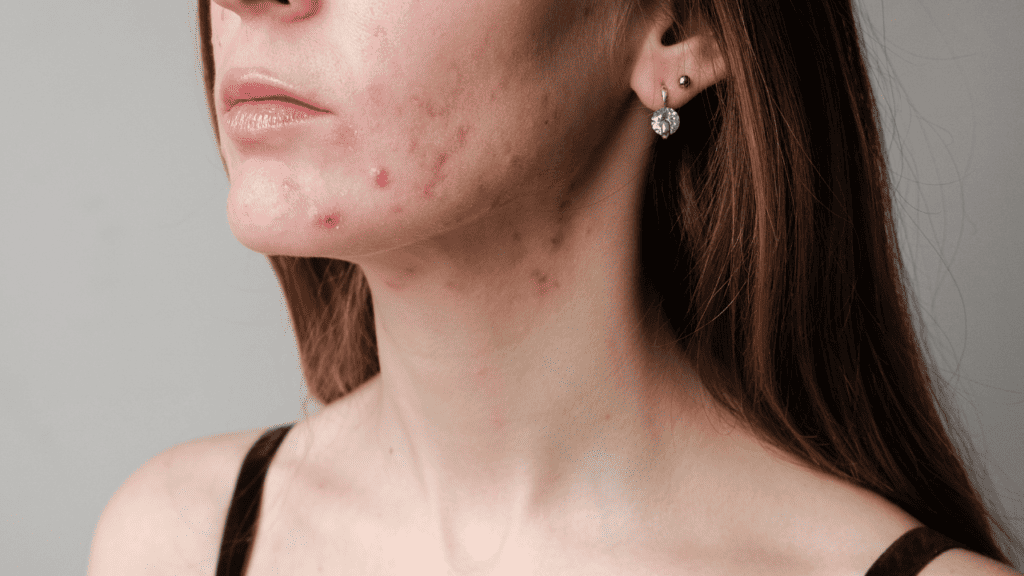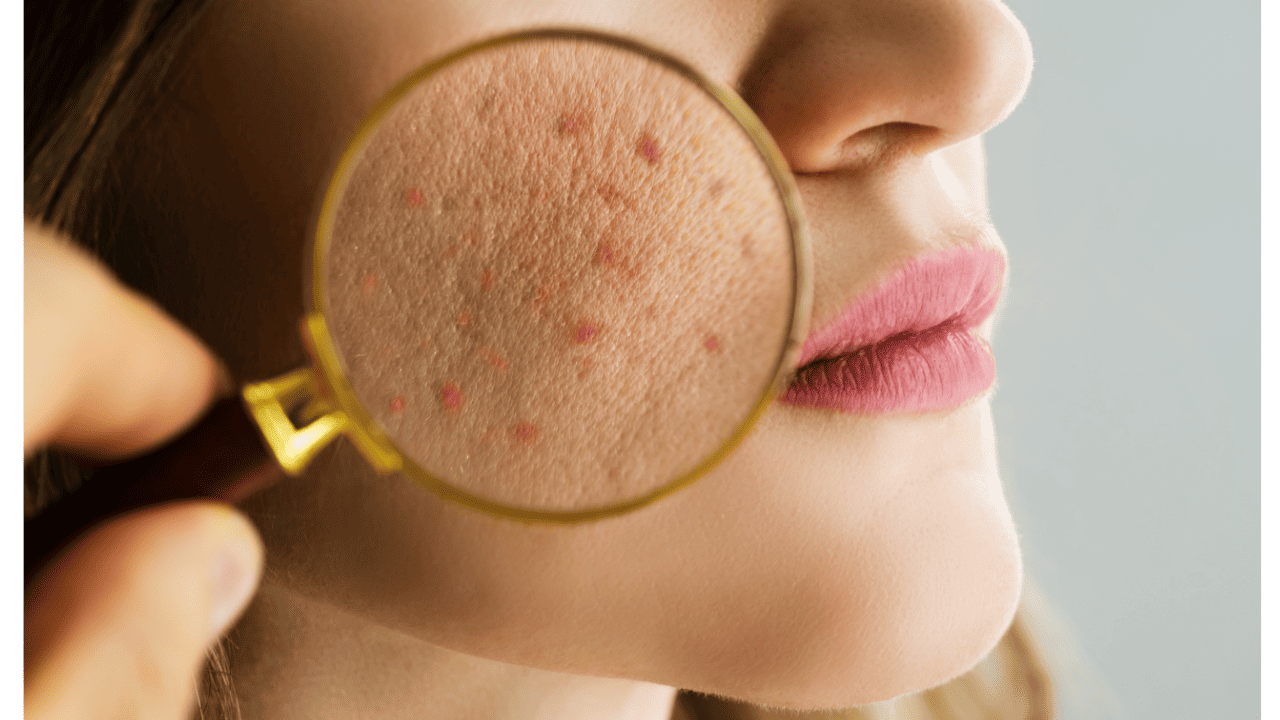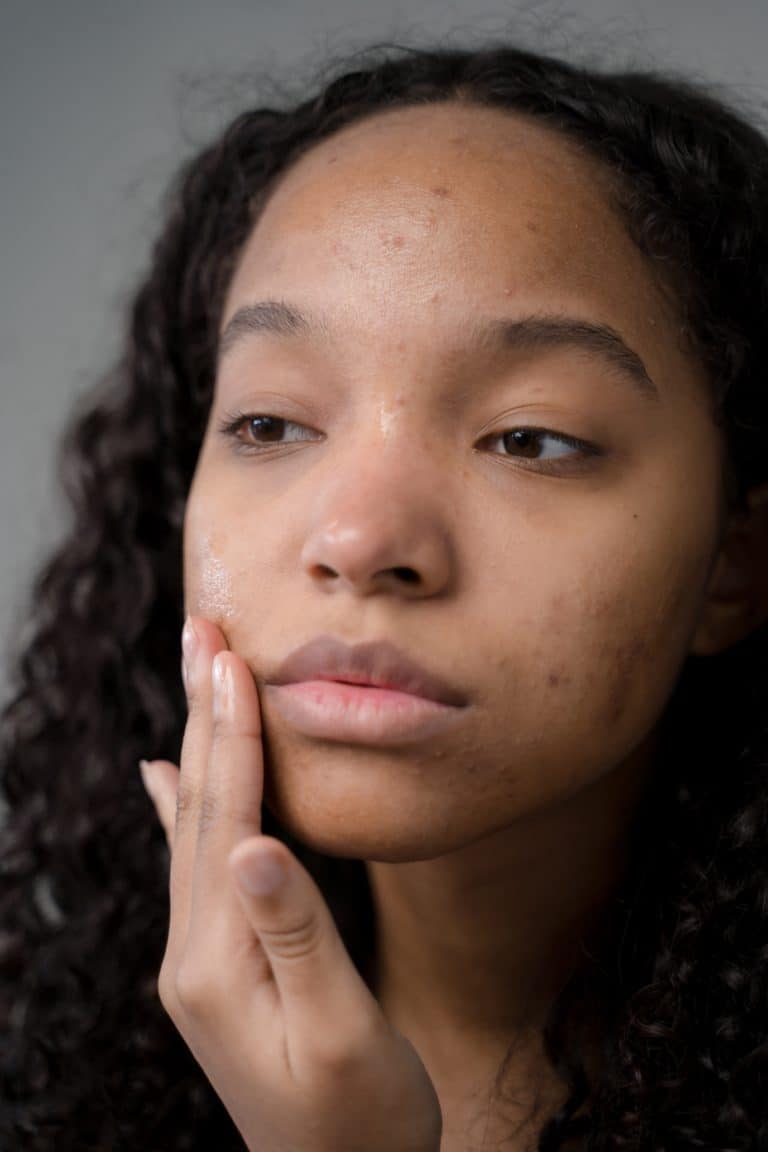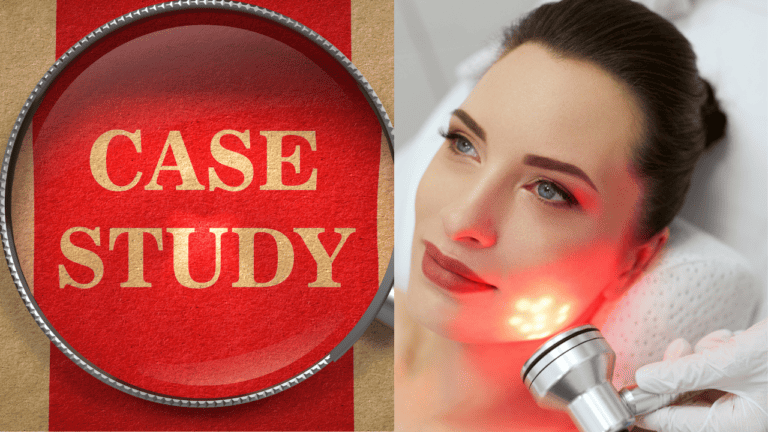Vitamin C is a crucial nutrient that plays a vital role in maintaining healthy skin. It is a powerful antioxidant that helps protect against environmental stressors and supports collagen production, which keeps skin firm and youthful. Vitamin C is also commonly used in skincare products, especially in serums, due to its ability to brighten the skin, reduce hyperpigmentation, and improve overall skin texture. However, some people have reported experiencing skin purging instead of breaking out when using vitamin C serum.

Understanding Skin Purging
Skin purging is a common phenomenon that occurs when using certain skincare products, including vitamin C serums. It is a process where the skin goes through a detoxification phase, causing impurities to rise to the surface, resulting in temporary breakouts. Skin purging is different from regular breakouts, as it tends to occur in areas where you usually experience acne and clears up faster than regular breakouts. It is an essential step in the skincare routine, as it helps to unclog pores and remove dead skin cells, revealing smoother, brighter skin.
Key Takeaways
- Vitamin C serum may cause skin purging instead of regular breakouts.
- Skin purging is a natural process that occurs when using certain skincare products, including vitamin C serums.
- Skin purging is different from regular breakouts and is a crucial step in the skincare routine.
Understanding Skin Purging

Definition and Process
Skin purging is a common phenomenon that occurs when someone starts using a new skincare product, especially those that contain active ingredients such as retinoids, AHAs, and BHAs. Purging is the process of bringing microcomedones (small, not-yet-visible acne bumps) to the surface of the skin, which may result in a temporary increase in breakouts. It is important to note that purging is not the same as breaking out, although the two can be confused.
Cell Turnover and Purging
The process of purging occurs due to an increase in cell turnover. Active ingredients in skincare products can speed up the process of shedding dead skin cells and promoting new cell growth. This can cause the microcomedones to come to the surface of the skin more quickly than they would have otherwise. As a result, the skin may appear to be breaking out more, but it is actually just purging.
Purging vs. Breakouts: Key Differences
It is important to understand the difference between purging and actual breakouts. Purging is a temporary process that occurs when someone starts using a new skincare product, whereas breakouts are a more long-term issue. Purging typically lasts for a few weeks, whereas breakouts can last for months or even years. Additionally, purging tends to occur in areas where someone is prone to breakouts, whereas breakouts can occur anywhere on the face or body.
In conclusion, skin purging is a natural process that occurs when someone starts using a new skincare product. It is important to understand the difference between purging and actual breakouts, as they are not the same thing. Purging is temporary and typically lasts for a few weeks, whereas breakouts can last much longer. By understanding the process of purging, someone can make an informed decision about whether or not to continue using a new skincare product.
Ingredients That May Cause Purging

When using a new skincare product, some people may experience a temporary worsening of their skin condition. This phenomenon is known as purging, and it is a natural process that occurs when the skin is adjusting to a new product. Purging can be caused by a variety of ingredients, including active ingredients and common purging-inducing ingredients.
Active Ingredients and Purging
Active ingredients are the key components in skincare products that provide the intended benefits. However, some active ingredients can cause purging, especially when they are used in high concentrations or in combination with other active ingredients. For example, retinoids, such as tretinoin and adapalene, are known to cause purging when they are first used. This is because retinoids increase cell turnover and can cause the skin to shed more rapidly, which can lead to the appearance of more breakouts.
Common Purging-Inducing Ingredients
In addition to active ingredients, there are several common purging-inducing ingredients that can cause the skin to break out when they are first used. These ingredients include hydroxy acids, such as glycolic acid and salicylic acid, which are often used in exfoliating products. These acids work by removing dead skin cells and unclogging pores, which can lead to purging.
Vitamin A, which is also known as retinol, is another ingredient that can cause purging. Like retinoids, vitamin A increases cell turnover and can cause the skin to shed more rapidly, which can lead to the appearance of more breakouts. However, vitamin A is less potent than retinoids and is less likely to cause severe purging.
Overall, purging is a natural process that occurs when the skin is adjusting to a new product. While it can be frustrating, it is important to be patient and allow the skin to adjust. If purging persists for more than a few weeks or if it is accompanied by severe irritation, it is recommended to consult a dermatologist.
The Role of Vitamin C in Skincare

Vitamin C is an essential nutrient that plays a crucial role in maintaining healthy skin. It is an antioxidant that helps to protect the skin against free radicals, which can cause damage and lead to premature aging. Vitamin C is also involved in collagen production, which is essential for maintaining the skin’s elasticity and firmness.
Benefits of Vitamin C Serums
Vitamin C serums are a popular skincare product that contains a high concentration of vitamin C. They are known for their ability to brighten the skin and reduce the appearance of fine lines and wrinkles. Vitamin C serums can also help to even out skin tone and reduce the appearance of dark spots.
One of the main benefits of using a vitamin C serum is its ability to protect the skin against free radicals. Free radicals are unstable molecules that can damage cells and lead to premature aging. Vitamin C is an antioxidant that helps to neutralize these free radicals and prevent damage.
Vitamin C and Skin Irritation
While vitamin C is generally safe for most people, some individuals may experience skin irritation when using vitamin C serums. This can be due to the high concentration of vitamin C in the serum, which can be too harsh for some skin types.
To minimize the risk of skin irritation, it is important to choose a vitamin C serum that is formulated for your skin type. It is also important to patch test the serum before applying it to your face, to ensure that you do not have an allergic reaction.
In conclusion, vitamin C is an essential nutrient that plays a crucial role in maintaining healthy skin. Vitamin C serums are a popular skincare product that can provide a range of benefits, including protection against free radicals and reducing the appearance of fine lines and wrinkles. However, it is important to choose a serum that is formulated for your skin type and to patch test the serum before applying it to your face.
Identifying and Managing Skin Irritation

Symptoms of Irritation
Vitamin C serum is a popular skincare product that can provide numerous benefits to the skin. However, some people may experience skin irritation when using it. Symptoms of skin irritation can include redness, itching, burning, and sensitive skin. These symptoms can be uncomfortable and may cause people to stop using the product altogether.
Distinguishing Between Irritation and Purging
It is important to distinguish between skin irritation and purging. Purging is a process where the skin is getting rid of impurities, and it can result in breakouts and acne. This process can be mistaken for skin irritation, but it is different because it typically occurs in areas where breakouts are common and only lasts for a short period.
On the other hand, skin irritation can occur anywhere on the face and can last for a longer period. If a person is experiencing skin irritation, they should stop using the product and seek medical advice.
Treating Irritated Skin
If a person is experiencing skin irritation from using vitamin C serum, they should stop using the product immediately. They can also try the following remedies to soothe the skin:
- Using a gentle cleanser to wash the face
- Applying a cold compress to the affected area
- Using a moisturizer to keep the skin hydrated
- Applying aloe vera gel to the affected area
- Taking an antihistamine to reduce inflammation
If the skin irritation persists or worsens, it is essential to seek medical advice. A doctor may prescribe a topical cream or medication to help alleviate the symptoms.
In conclusion, while vitamin C serum can provide numerous benefits to the skin, it can also cause skin irritation in some people. It is essential to distinguish between skin irritation and purging and stop using the product if irritation occurs. By following the remedies mentioned above, a person can soothe the irritated skin and prevent further discomfort.
How to Safely Introduce Vitamin C Serums
When it comes to introducing a new skincare product, especially one that contains active ingredients like Vitamin C, it is important to do so with caution. Vitamin C serums have become increasingly popular due to their ability to brighten skin, reduce hyperpigmentation, and boost collagen production. However, some people may experience purging instead of breaking out when they first start using Vitamin C serums. This section will provide some tips on how to safely introduce Vitamin C serums into your skincare routine.
Patch Testing for Sensitivity
Before incorporating a new product into your skincare routine, it is always important to patch test it first. This involves applying a small amount of the product to a small area of skin, such as behind the ear or on the inner arm, and waiting 24-48 hours to see if any adverse reactions occur. Patch testing can help determine if you are sensitive to the product and can prevent a full-face breakout or irritation.
Incorporating Vitamin C into Your Routine
When introducing Vitamin C serums into your skincare routine, it is important to start slow and gradually increase usage. Begin by using the serum once or twice a week, and then gradually increase to daily use. This will allow your skin to adjust to the product and prevent purging.
It is also important to note that Vitamin C serums should be used in the morning, after cleansing and toning, and before moisturizing and applying sunscreen. This is because Vitamin C can help protect the skin from environmental damage and free radicals, and can also enhance the effectiveness of sunscreen.
When using Vitamin C serums, it is important to follow up with a moisturizer to prevent dryness and irritation. Look for a moisturizer that is non-comedogenic and fragrance-free to avoid any potential irritation.
In summary, introducing Vitamin C serums into your skincare routine can be a great way to improve the overall health and appearance of your skin. However, it is important to patch test for sensitivity and gradually incorporate the product into your routine to prevent purging. Additionally, it is important to follow up with a moisturizer and sunscreen to protect and nourish the skin.
When to Consult a Dermatologist
Vitamin C serum is widely used for its many benefits, including brightening the skin and reducing the appearance of fine lines and wrinkles. However, some people may experience purging instead of breaking out when using vitamin C serum. Purging is a process where the skin gets worse before it gets better, and it is often mistaken for a breakout. If you are experiencing persistent breakouts or skin concerns, it may be time to consult a dermatologist.
Persistent Breakouts and Skin Concerns
If you have been using vitamin C serum for a few weeks and notice that your skin is breaking out more than usual, it may be time to consult a dermatologist. A board-certified dermatologist can help you determine if the purging is normal or if there is an underlying skin concern that needs to be addressed. They can also recommend other skincare products or treatments that may be better suited for your skin type.
Professional Treatments and Advice
Dermatologists can provide professional treatments and advice to help you achieve your skincare goals. They may recommend chemical peels, lasers, microdermabrasion, or other treatments to help improve the appearance of your skin. They can also provide advice on how to properly care for your skin and which products to use for your specific skin concerns.
In conclusion, if you are experiencing persistent breakouts or skin concerns, it may be time to consult a dermatologist. They can help you determine if the purging is normal or if there is an underlying skin concern that needs to be addressed. They can also provide professional treatments and advice to help you achieve your skincare goals.
Preventing Future Skin Issues
When it comes to skin health, prevention is key. Adopting a holistic skincare approach can help to prevent future skin issues and maintain a healthy, glowing complexion.
Adopting a Holistic Skincare Approach
A holistic skincare approach involves taking care of your skin from the inside out. This includes adopting healthy lifestyle habits, such as getting enough sleep, managing stress, and eating a balanced diet.
Using the right skincare products is also important. Look for products that contain antioxidants, which can help to protect your skin from free radical damage and prevent premature aging. Vitamin C serum is a popular skincare product that contains antioxidants and can help to brighten and even out skin tone. However, some people may experience purging when they first start using vitamin C serum.
Lifestyle Factors and Skin Health
Stress and hormones can also have a significant impact on skin health. High levels of stress can lead to inflammation in the body, which can worsen skin conditions like acne and rosacea. Hormonal imbalances can also cause skin issues, such as acne and hyperpigmentation.
Maintaining a healthy diet can also help to prevent future skin issues. Eating a diet rich in antioxidants, healthy fats, and hydration can help to nourish and protect your skin from the inside out.
In addition, keeping your skin moisturized and using anti-inflammatory skincare products can also help to prevent future skin issues. Look for products that contain ingredients like aloe vera, chamomile, and green tea, which can help to soothe and calm irritated skin.
By adopting a holistic skincare approach and taking care of your skin from the inside out, you can help to prevent future skin issues and maintain a healthy, glowing complexion.
Frequently Asked Questions
What is the difference between skin purging and a breakout when using Vitamin C serum?
Skin purging is a temporary reaction that occurs when using a new skincare product that increases cell turnover, such as Vitamin C serum. During the purging phase, the skin may experience an increase in breakouts or other types of skin blemishes. This is because the serum is accelerating the skin’s natural exfoliation process, which can cause impurities to rise to the surface and be expelled from the skin.
On the other hand, a breakout is a reaction to a product that does not suit the skin or causes irritation. Breakouts occur when the skin is exposed to a new product that clogs the pores or causes inflammation. Unlike purging, breakouts can be painful and may last longer than the purging phase.
How long does the purging phase typically last after starting a Vitamin C serum?
The purging phase typically lasts for two to four weeks after starting a Vitamin C serum. During this time, the skin may appear worse before it gets better. However, once the purging phase is over, the skin will start to look clearer, brighter, and more even-toned. It is essential to be patient during the purging phase and continue using the serum as directed.
Can the use of salicylic acid with Vitamin C serum increase the likelihood of skin purging?
The use of salicylic acid with Vitamin C serum can increase the likelihood of skin purging. Salicylic acid is a beta-hydroxy acid that also increases cell turnover and can cause the skin to purge. When using both salicylic acid and Vitamin C serum, it is essential to start with a low concentration of each product and gradually increase the concentration over time. This will allow the skin to adjust to each product and reduce the likelihood of purging. It is also important to use sunscreen when using these products, as they can make the skin more sensitive to the sun.





